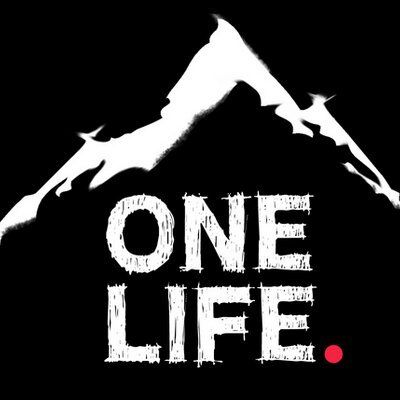Crossing Papua New Guinea.
This is an epic account of a world first expedition. A proper adventure involving close shaves with man and beast...
Who are you
Richard Johnson and Patrick Hutton
What was the challenge
The first non motorised crossing of Papua New Guinea
How long did it take
3 months
What was the distance
463 miles as the crow flies
How much did it cost
£4000 + grant + kit sponsors
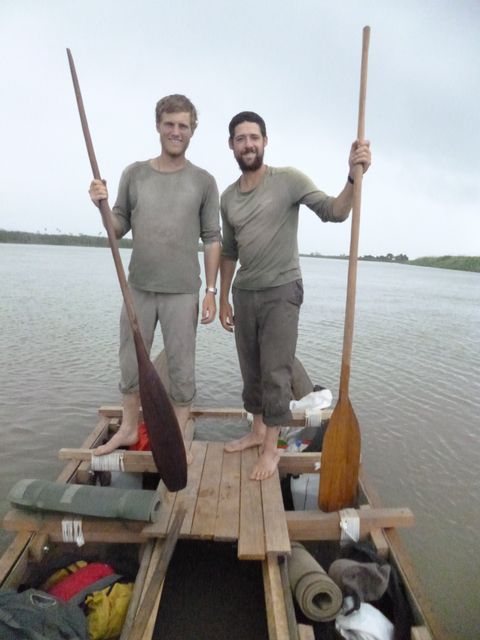
What was it like?
Stage 1:
Vanimo to Mianmin
After two years of meticulous preparation, we were in Vanimo at the northern tip of Papua New Guinea ready to embark on the toughest adventure of our lives. Our ridiculously burdensome bags tipped the scales at 42kg, and our pale and fresh shaven faces were eager with excitement to make a dent on our spotless map. With adrenaline soaring, we headed south towards the Bewani mountains. There, our enthusiasm rapidly evaporated in the searing equatorial heat, which wiped us both out and brought us crashing back to earth with a thundering bump.
That evening as we rigged our hammocks under the hut in a small village, a decision was made to have our first kit cull. After dropping all the unessential items we were on our way again.
The terrain on our first 7 days was relatively easy; it ran over a gravel road which had been produced by the logging companies, who’d ploughed through the mountainous jungles to create it. It gave us a perfect opportunity to find our feet amongst such an alien and unforgiving landscape. On this road we had a variety of experiences; we spent an evening in a PNG army compound, ate fresh turtle in small roadside villages, got thrown out of a logging companie's watch tower by a drunk security guard, and had our first lesson in the art of shooting a bow and arrow.
The last two days of this leg were spent trudging through bush tracks, where we had a daunting introduction to river crossings, log crossings and hill scrambles. Our confidence was knocked to nonexistence as we struggled in every element.
The rucksacks we carried felt like wardrobes, and it became obvious that more kit needed to be dropped.
Our ruthlessness led to the two video cameras along with all it’s of the accessories being sent back to Vanimo, which was a tough decision, but it gave us the best chance of completing the expedition. Another big-ticket item to be dropped was our packraft. This was based on the advice a group of locals gave us of a region hundreds of kilometres away, which they had never been to. Hopefully this was a risk we wouldn’t regret later.
In Green River we said goodbye to our local guide Benson, a man who had been with us from the start, and came to us in our time of need and seemed to use hand rolled cigarettes as his fuel to keep plodding along.
We left Green River in a dugout canoe for a half day paddle upstream with our new guide Murray. Murray was a young lad who we created a great rapport with, and he truly joined in on the ethos of the expedition.
The jungle was becoming increasingly steep as we edged closer to the Star Mountains, an abrupt range which stretches across the middle of the island. Our days were routinely spent wading through rapid waist-deep rivers, balancing on logs over sharp drops, and climbing up vertical mud walls using vines and loose rocks as our holds.
As we entered the small village of Solamin, we were told the track had ended. To progress to Hotmin, we realised that we would need to build a raft from trees in the jungle. With the help of two villagers, we felled a dozen trees using machetes, stripped some vines that hung over the canopy and proceeded to watch a skill neither of us had seen, or would have any chance of repeating in a reasonable time.
The local villagers lashed together roughly eight logs to form the base of the raft, they then whittled down some thinner branches, hammered them into the base and formed a crisscross platform for our bags.
The next three days on the raft proved to be one of the most dangerous periods of the expedition. We found ourselves wrestling with whirlpools, circumventing piercing debris in the shape of submerged trees, and fighting off rapids without any paddles to steer. Throughout, our raft would sink lower and lower in the water, as the logs and vines became increasingly water logged. Miraculously we made it through without a broken limb, despite the numerous times that legs and arms slipped between the raft and a boulder.
Relieved to make it to Hotmin unscathed, we treated ourselves to a rest day before commencing the five day leg to Mianmin.
This next leg would see us enter the most remote section of the expedition.
The rivers were now wider and faster, making crossings more dangerous. As we scrambled over each peak and traversed each ridge, the low calorie diet we were compounded to left us weak. Our bodies were struggling to cope with the demands of the jungle. The cold crept in as we slowly climbed in altitude, and our feet showed signs of immersion foot, which left large patches of raw exposed skin; a very painful and unpleasant ailment. Each night new cuts would need to be tended to, where pus would be scraped off to better allow drops of stinging iodine a chance to disinfect.
After an exhausting few days, we reached the base of the Star Mountains at the village of Mianmin. We gave ourselves two days rest, to refuel on sweet potatoes and wait for our feet to repair. A change of guides from Murray to Ishmael ensured we would safely find passage to Telefomin, a village three days away. After becoming lost in the jungle a number of times with Murray, this had become a demoralising concern.
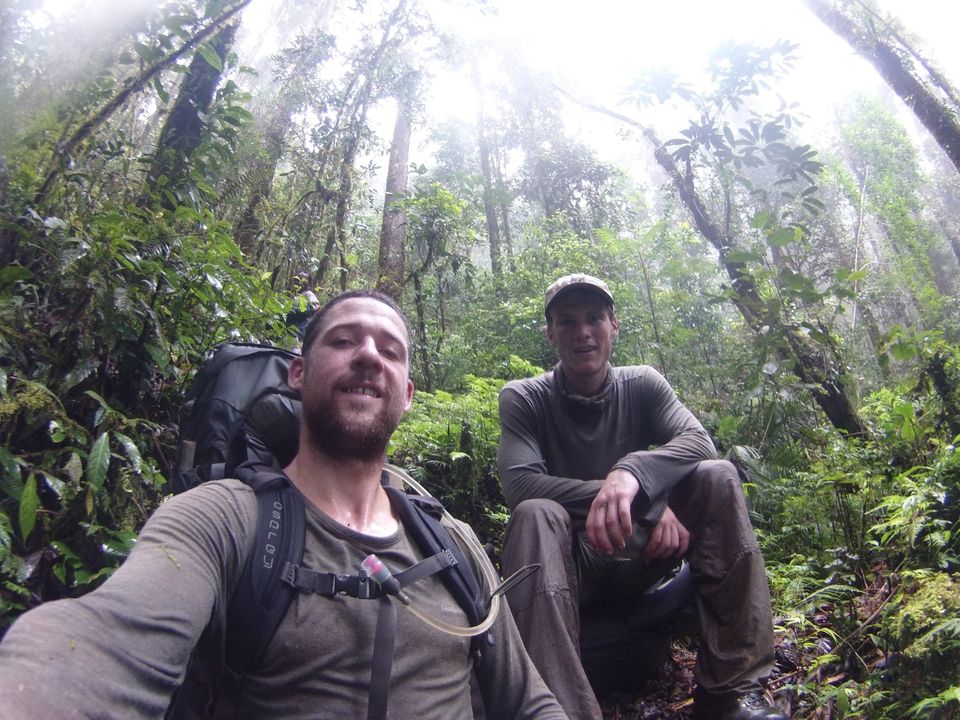
Stage2:
Mianmin to Kiunga
With feet fixed and a belly bursting full of potato starch, we continued south into the imposing Star Mountains. As we slowly crept up, the surroundings changed into an almost mythical land; the trees looked like wooly mammals with moss as their fur, and the fauna resembled that of European descent rather than tropical jungle. We ended up spending the night perched on the high jungle’s mountain ridge, shivering away the night and wishing we’d kept some warm kit.
A three day long joint shattering ascent and descent was sporadically interrupted by majestic views when the canopy occasionally cleared to show the cloud forrest below. A dangerous river crossing at the mountains foot saw a fast-flowing torrent sweep us both underwater during a crossing, only to be dragged out spluttering by our capable local Ishmael.
By the end of the leg in Telefomin, both of us were sad to see Ishmael leave. He was a true professional, and a kind hearted man who we now owed our lives to.
Once again our feet had decided to fall apart in the relentless damp environment they were confined to. A resulting two day break in Telefomin was required, before we headed off to Tabubil with our new local Lukas, over the infamous Hindenberg Wall.
Day one was largely unremarkable other than Lukas' worryingly low level of knowledge and his poor fitness. We had somehow managed to pick the one man in Papua New Guinea not equipped with knowledge of the jungle – in hindsight extremely amusing, but at the time horrifically frustrating and scary.
At just over 2,600m, we reached the highest point of the expedition before trudging into the ironically named ‘5 Grasslands’. The ‘grasslands’ materialised in the form of a vast plateau on the roof of the Star Mountains, with relentless never ending waist-deep swamps.
This draining environment led us to a renowned feature in Papua New Guinea which we had both hoped to see, but had never imagined to actually scale. The Hindenburg Wall, known locally as the landslide, is a sheer vertical limestone rock face on the southern side of the Star Mountains. To help our nervous descent was a precarious looking vine ‘rope’, and a tangle of splintering stick scaffolding. We descended adrenalin fuelled, but safely, to the site of a hunters bush shelter where we warmed up and dried our kit next to a roaring fire - a miracle.
The final 2 days into Tabubil were emotional. An inaccurate map and an ignorant guide resulted in a longer section than we’d anticipated. This saw us resort to the emergency rations, after quite possibly the hardest day of the expedition, where we found ourselves us swimming through gloopy mud for it’s entirety. Energy levels were depleted, feet again red raw, and the fact we had no idea how far away Tabubil was, caused tension within the team to rise.
However, all pain and suffering evaporated when we saw the asphalt road from a clearing in the canopy.
Weeks being spent constantly watching your step, buckling over uneven ground, shifting through boundless swamps and rivers, all to be replaced by the alien hard stable ground; a luxury not take for granted!
We gorged from Tabubil’s well stocked shops on imported products. It took five days for our feet to heal and for kit logistics to be arranged (our filming gear needed to be bought back).
A random opportunity to weigh ourselves showed we had lost 10kg each, it showed as well in our gaunt weary frames.
The final leg of this stage from Tabubil to Kiunga was a largely uneventful affair. A 140km gravel road which connected the two towns for the mining companies to transport their ore; resulted in a series of personified groundhog days, with only the roadside mile markers changing.
The monotony of the road did however allow our thoughts to drift to a neglected element of the expedition; the paddling section.
We’d been so concerned with the walking element of the expedition that we’d decided if, after managing to make it to Kiunga, we’d worry about the paddling plans then.
A dirtier and dustier version of Tabubil, at least one similarity it did have was the availability of a cold beer. We celebrated with a few cans to mark the end of the walking phase of the expedition. An overwhelmingly proud moment, as we had completed the stage many thought impossible.
No time for complacency though, as we had to construct an expedition boat to travel the length of the Fly River.
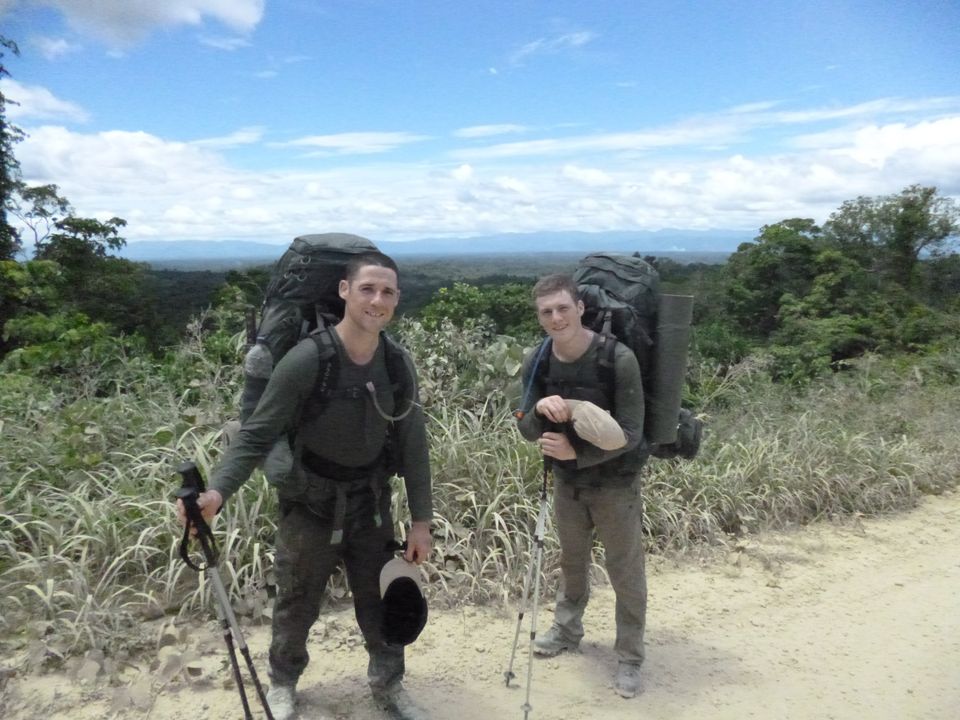
Stage 3:
Kiunga to Daru
Despite the hangover, the next three days in Kiunga were highly productive. We met Paul, a local carpenter who agreed to help fabricate our boat. Based on a catamaran design, we had two dugout canoes lashed together with wooden supports. Loaded up with supplies for the next 10 days, our aim was to travel the length of the Fly River.
Our new local Jeffery, who had an uncanny resemblance to Usain Bolt, would accompany us for the next four days to Manda II. After the initial excitement of being on our new craft, lovingly named Tut-tut, it quickly became apparent that large parts of the day would be uneventful. The curls and bends of the river defied our sense of direction, and we would occasionally slip into the unstable Indonesian colony of Irian Jaya (West Papua) by accident, before paddling back out in a hurry.

During a fresh water resupply in a small village, a welcoming party of men dressed in camouflage wielding rifles and shotguns greeted us. Fear struck us both as we parked the boat by the river bed, but their wide smiles and welcoming gestures were not what we expected. These strangers introduced themselves as rebels of the OPM, a guerrilla movement campaigning for independence of Western Papua from Indonesia.
Considered by many as a terrorist organisation, the rebel militia has fought with the Indonesian military since 1965. The two of us were offered rights to Papua New Guinea’s valuable gold resources in exchange for weapons to help their campaign. After solemnly declining the offer the OPM rebels informed us we’d need a river escort for the next section.
We were required to report to OPM headquarters downriver and check in with the Commanding Officer for the region. At 0200 we nervously paddled into the headquarters. Silent pitch-black silhouettes of the villagers and militants were waiting along the river bed for our arrival.
The mood was drastically different; minimal conversation, serious handshakes and questioning glares from the men who surrounded us in an intimidating circle. After we signed their log, a thirty-minute stare off ensued, none of our questions were answered, and we were eventually told to leave.
An extremely nerve racking experience, which we both hoped not to encounter again on the expedition.
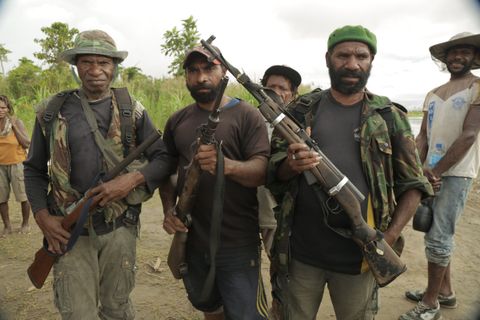
As the miles were eaten up, the next few days were fairly routine. Swapping our guide regularly, we became comfortable on our boat, although, as usual, this didn't last long, crocodiles and tidal bores shattered any feeling of relaxation. The monotony of paddling along the river bank would be interrupted by the unmistakable sound of a crocodile entering the water. If these beasts chose to, they would have found no trouble tackling our boat - and us with it. After all, many were as large as our vessel.
With multiple reports of fisherman being devoured in their canoes, it was time for an upgrade from the shallow protection our boat offered. What’s more, the river was widening and becoming oceanic, with twice daily tides that slowly battered our trusty Tut-tut, we followed the example set by locals, and swapped it for a sailing boat. The giant hull of our sail boat had a rickety outrigger lashed together with a mixture of string, a bent out coat hanger, and jungle vine. The sail was a patchwork of various tarps and holes throughout, not sailing as we know it.
Within the first 3 hours our mast cracked and broke while we were centered on a 5 km wide stretch of water. Not ideal. Here, we were introduced to our last big potential nemesis for the rest of the trip – the tidal bore. This daily occurrence forced us for the majority of each day to be marooned on the river bank until a change in tide. With progression out of our hands, and our visa cut off date looming, frustration crept in.
Our end point of Daru Island was tantalisingly close, teasing us on the map as we were restricted to a few hours sailing each day. Our final vessel, an old dingy with a makeshift sail erected at its centre, was manned by us and a crew of sago farmers, who helped us complete what had been coined by the locals a ‘suicide sail’. This terrifying name was given, as nobody would normally sail during that time of year due to the rough waters.
The one-eyed owner of the boat confidently stated that if anything were to go wrong, we would all die. With the motivational chat out of the way, we proceeded to tackle the challenge. For three days; thunderstorms, heavy rain and high winds which were occasionally so bad, we were forced to drag the boat along the shore line. We operated on a couple hours sleep each night until we could see the sweetest sight we could only dream of. 83 days of relentless hardship, 2 years of boastful claims and endless candidates for ‘hardest day of the expedition’, we had finally arrived to our end point of Daru Island.
We had crossed Papua New Guinea at its widest point without using any porters or any motors.
It was over; the 4 am starts pulling on our wet cold clothes, the walking for days on raw skin lugging ludicrously heavy bags up vertical jungle cliff faces, the wrestle with perilous river crossings and waist deep swamps, the diet where the calorific value was suited to a small child, the building of a raft solely from what the jungle had to offer, the fights out of whirlpools on our frail raft, the falls off log crossings into streams and razor sharp plants, the encounters with a dodgy guerrilla movement, the close shaves with crocodiles during moments when capsize appeared inevitable, done. Over. All of these points - and so many more, is why PNG epitomised adventure. It is why we were predicted to fail, and why we are both incredibly proud of our achievement. Stubbornness is a great quality; do not underestimate its power. A few beers with the team were toasted on completion, but the realisation of that what we had completed not truly setting in for many weeks to come. Upon reflection, looking at photos, videos and diary extracts, we can not think of a better way to spend 3 months of our lives – we may have forgotten all the bad times!
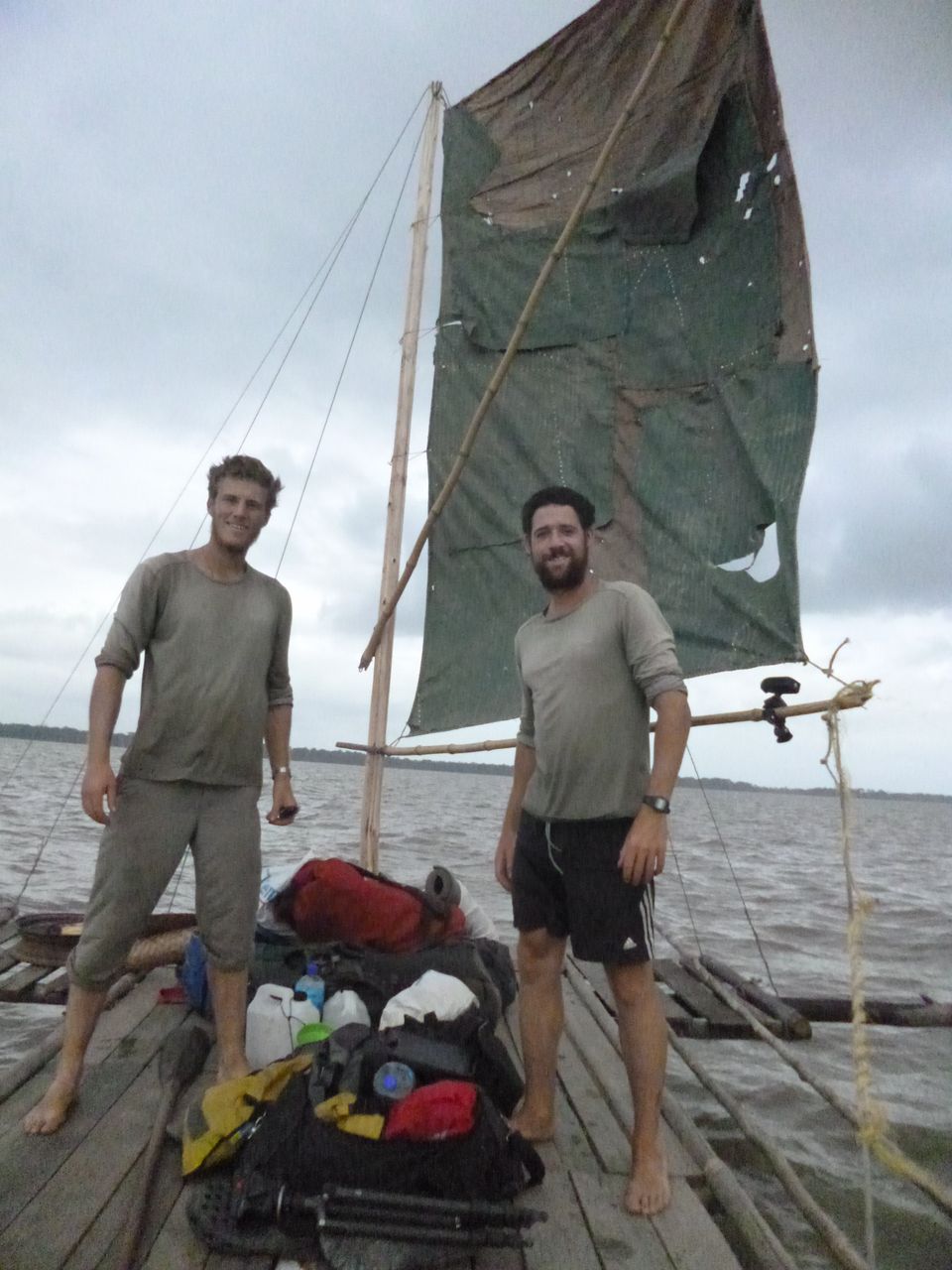
How did you train
We both would walk for long hours, eventually progressing the weight in our rucksacks to 35 kg. Where possible we would try and include some hill reps. In the gym we’d do a lot of strength work for high reps including step ups, lunges, squats and dead lifts – along with our runs and bike training. Alongside ensuring we were prepped physically, we needed to familiarise ourselves with all our kit making sure it was up for the job and we knew how to use it properly.
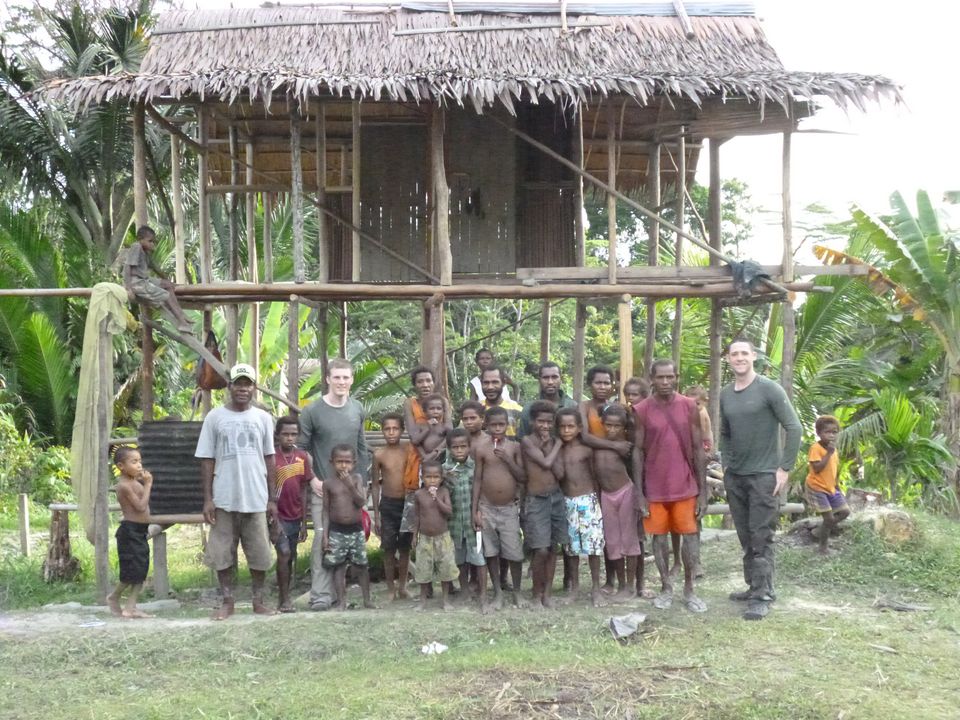
Any other useful tips / links
Do your homework and find out who has done similar expeditions, both successful and unsuccessful, and learn from them. Don’t expect anything for free, we had to work very hard for the grant and kit sponsors, so ensure that you give something back – otherwise you are likely to stop someone in the future being offered kit if you do not fulfil your duty.
Don’t let people tell you it’s too dangerous, stupid, impossible or something that only the highly trained can accomplish – be stubborn and stick to your unbelievable goal.
For more infomation, or to get in touch with Patrick and Richard please visit their website.
View More Articles
Services List
-
Land This is a text area. Writing in paragraphs lets your visitor find what they are looking for quickly and easily. Edit the text in the list editor.
Land -
Water Expeditions This is a text area. Writing in paragraphs lets your visitor find what they are looking for quickly and easily. Edit the text in the list editor.
Water Expeditions -
Ice Expeditions This is a text area. Writing in paragraphs lets your visitor find what they are looking for quickly and easily. Edit the text in the list editor.
Ice Expeditions
